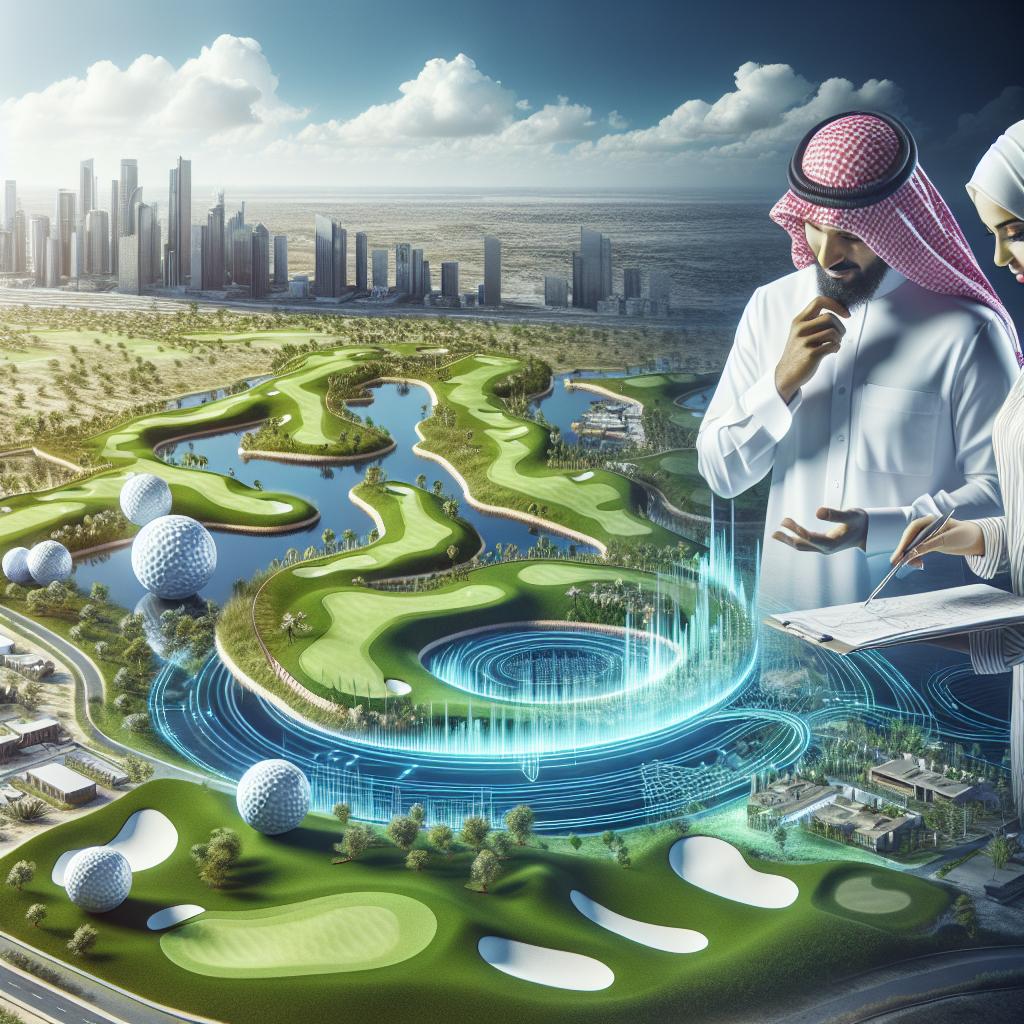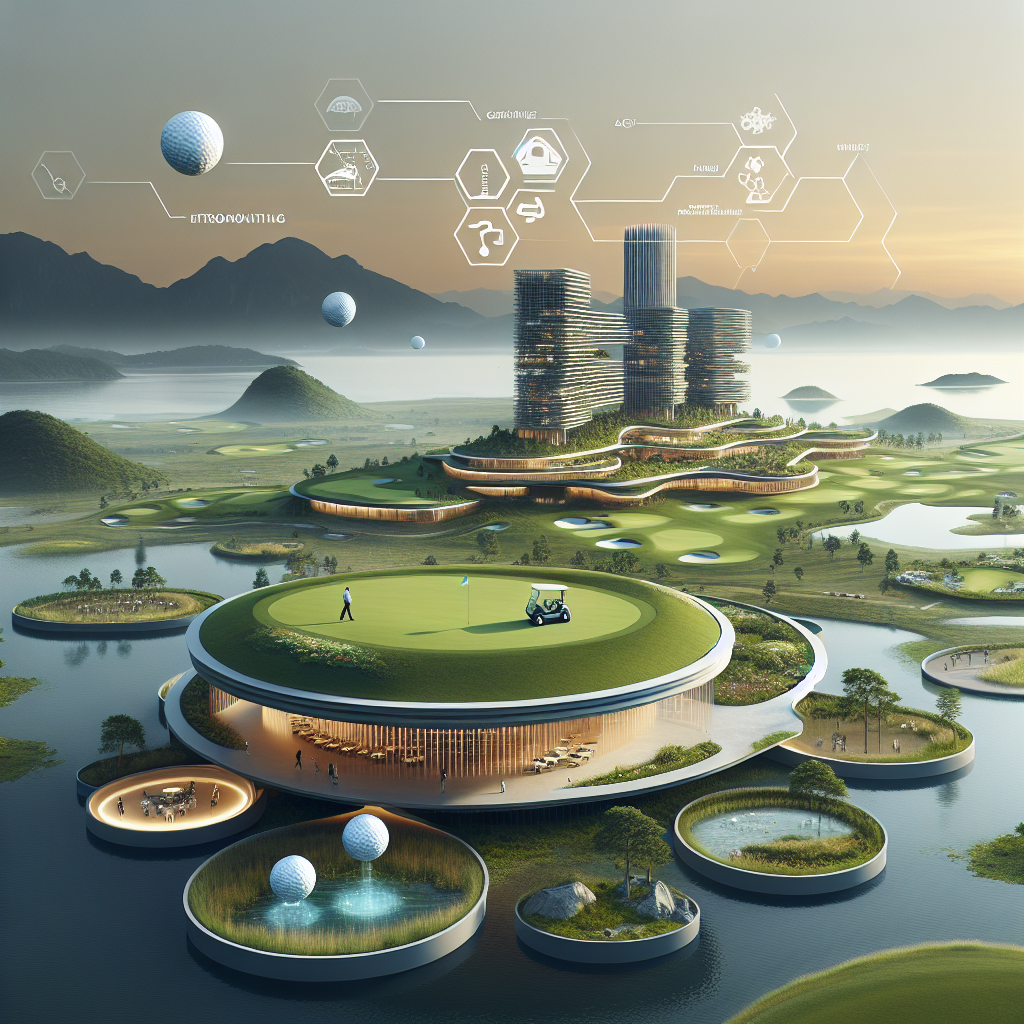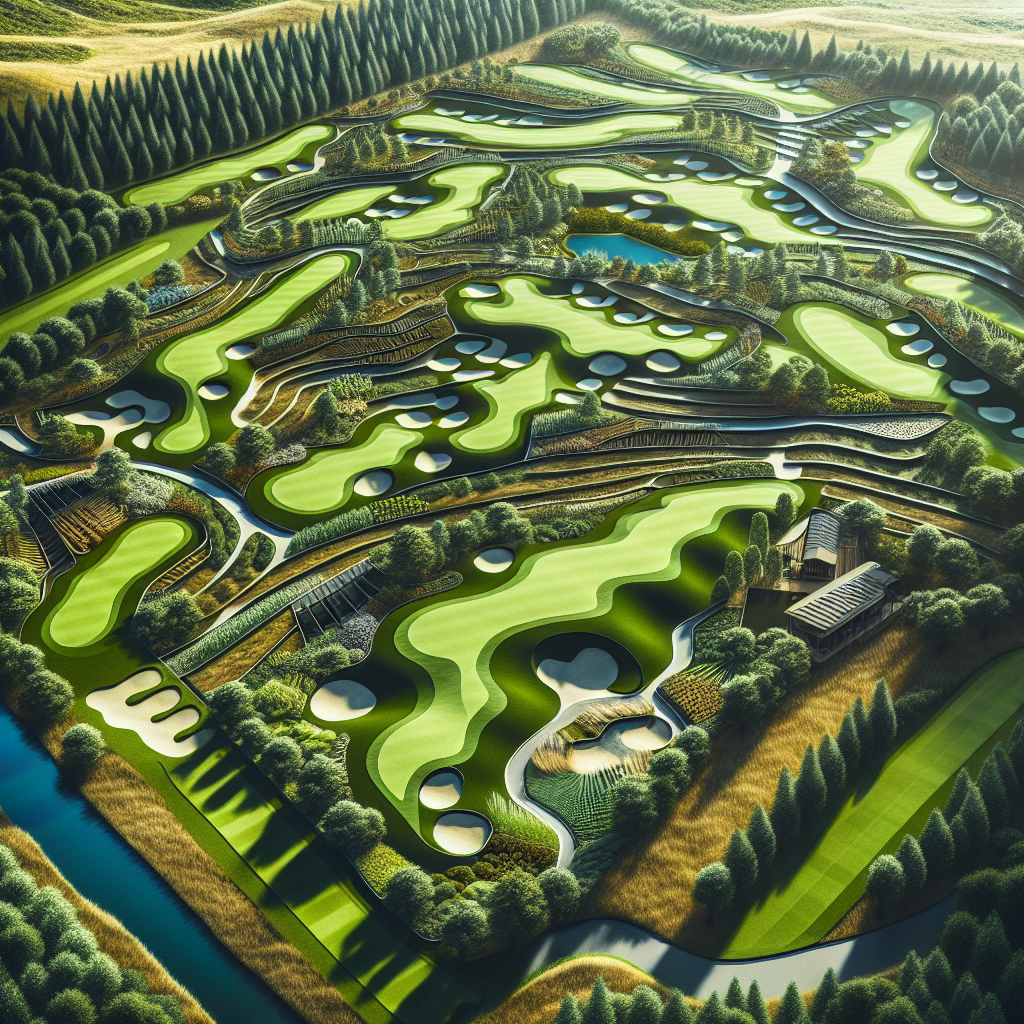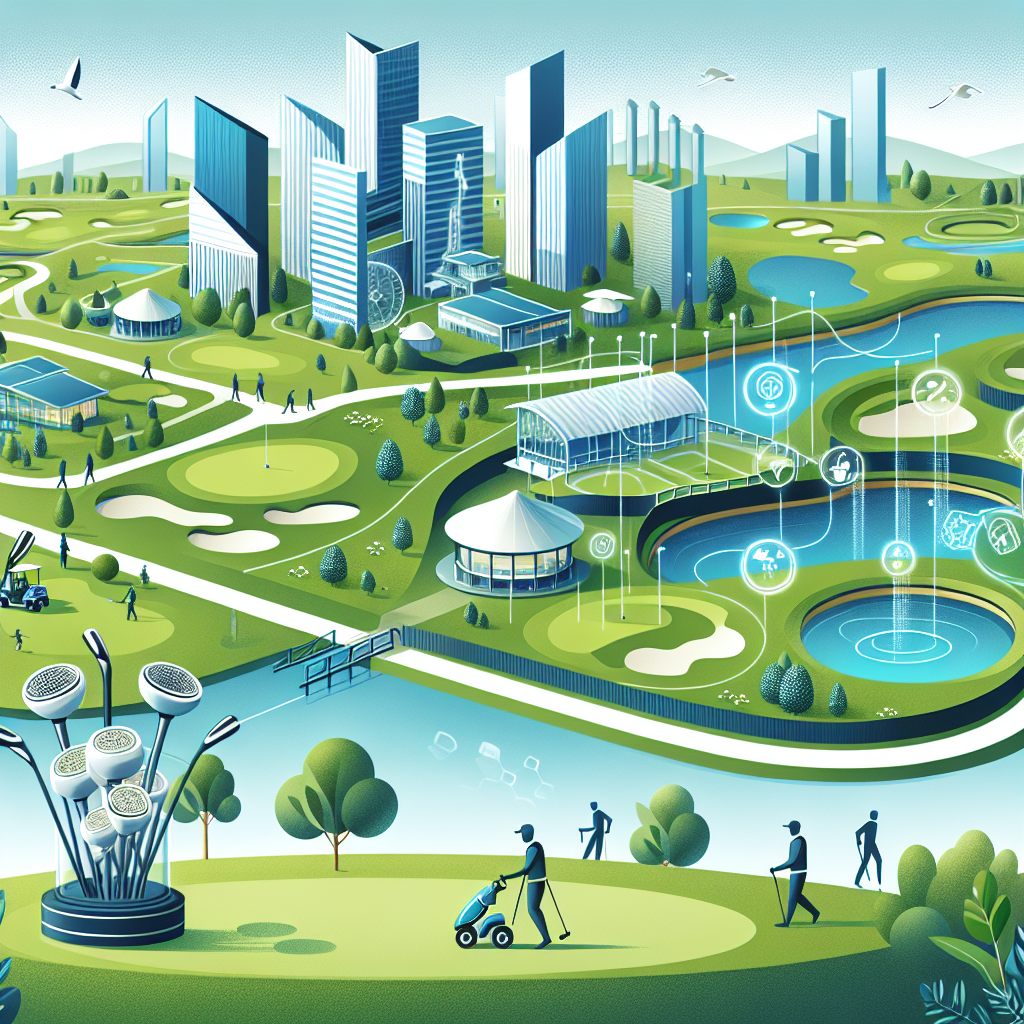Golf course architecture is an ever-evolving field that continuously pushes boundaries and embraces new trends. From sustainability and environmental stewardship to cutting-edge technology and innovative designs, the future of golf course design is being shaped by a variety of exciting developments. These trends are not only enhancing the playing experience for golfers of all levels but also transforming the way courses are integrated into their natural surroundings. This article explores the latest innovations that are revolutionizing the world of golf course architecture and setting the stage for the future of golf course design.
Evolution of Golf Course Architecture
Historical Perspective on Golf Course Design
Golf course architecture has a rich history dating back to the origins of the sport in Scotland during the 15th century. Initially, golf courses were rudimentary layouts on natural terrain, with players navigating the land as it existed. The early architects of these courses were primarily concerned with creating playable and challenging layouts within the limitations of the landscape.
As the popularity of golf grew and spread globally, the demand for more sophisticated and strategic course designs increased. Architects began to incorporate elements of landscaping and shaping to enhance the strategic and aesthetic appeal of the courses. This evolution marked the transition from purely naturalistic designs to more intentional and artistic creations that aimed to test and engage golfers of all skill levels.
Influence of Traditional Golf Course Architecture on Modern Trends
The traditional golf course architecture principles laid down by pioneers such as Old Tom Morris, Alister MacKenzie, and Donald Ross continue to influence modern trends in golf course design. These architects emphasized the importance of strategic shot-making, natural beauty, and seamless integration with the surrounding environment.
Modern architects are building upon these foundational principles by incorporating cutting-edge technology, sustainability practices, and innovative design concepts into their work. The integration of drones for site analysis, 3D modeling for precise shaping, and eco-friendly construction materials are revolutionizing the way golf courses are designed and built.
In conclusion, the evolution of golf course architecture from its humble beginnings to the present day highlights the enduring influence of tradition on modern trends. By honoring the past while embracing innovation, architects are shaping the future of golf course design in exciting and sustainable ways.
Sustainable Design Practices in Golf Course Architecture
Utilization of environmentally friendly materials
Environmentally Friendly Materials
In recent years, the golf course architecture industry has seen a significant shift towards incorporating environmentally friendly materials in the design and construction of golf courses. This trend is driven by the increasing awareness of the impact that traditional construction methods can have on the environment, as well as the desire to create sustainable and eco-friendly golfing experiences.
Benefits of Sustainable Design in Golf Courses
- Reduced Environmental Impact: By using environmentally friendly materials such as recycled plastics, reclaimed wood, and sustainable landscaping practices, golf courses can significantly reduce their carbon footprint and minimize harm to the surrounding ecosystem.
- Resource Conservation: Sustainable design practices help conserve natural resources by promoting the use of renewable materials and reducing waste generation during construction and maintenance activities.
- Enhanced Aesthetics: Environmentally friendly materials can often enhance the aesthetics of a golf course, creating a more visually appealing and harmonious environment for players and wildlife alike.
- Long-Term Cost Savings: While initial investments in sustainable materials may be higher, the long-term cost savings associated with reduced maintenance, water usage, and energy consumption can make environmentally friendly golf course design a financially sound choice.
Examples of Eco-Friendly Features in Modern Golf Course Architecture
- Permeable Paving: Utilizing permeable paving materials for walkways, cart paths, and parking areas helps reduce stormwater runoff, prevent erosion, and promote groundwater recharge.
- Native Plant Landscaping: Incorporating native plants in landscaping design not only enhances biodiversity but also reduces the need for excessive water consumption and chemical pesticides.
- Recycled Water Systems: Implementing recycled water systems for irrigation purposes can significantly decrease water usage and minimize the reliance on potable water sources.
- Green Roofs: Installing green roofs on clubhouses and maintenance buildings can improve energy efficiency, reduce urban heat island effect, and provide habitat for local wildlife.
In conclusion, the utilization of environmentally friendly materials in golf course architecture not only aligns with the broader sustainability goals of the industry but also offers tangible benefits in terms of environmental conservation, resource efficiency, and overall player experience.
Incorporating natural elements
Natural Elements
In golf course architecture, incorporating natural elements has become a pivotal trend in shaping the future of golf course design. This innovative approach focuses on seamlessly blending the course with the natural landscape, creating a harmonious and sustainable environment for both the game and the surrounding ecosystem.
-
Blending the course with the natural landscape: Golf course architects are increasingly moving away from the traditional approach of shaping the land to fit the course. Instead, they are now working with the natural contours and features of the site to create a more organic and visually appealing layout. This not only enhances the beauty of the course but also minimizes the environmental impact of construction.
-
Importance of biodiversity in golf course architecture: Another key aspect of incorporating natural elements is the emphasis on promoting biodiversity within the golf course environment. By preserving existing habitats, planting native vegetation, and creating wildlife corridors, architects are able to enhance the ecological value of the course while providing players with a more engaging and immersive experience. This trend towards biodiversity not only contributes to the overall sustainability of the course but also fosters a deeper connection between golfers and the natural world.
Technology Integration in Golf Course Design

Utilization of drones in course planning
Drones in Course Planning
Incorporating drones into golf course design has revolutionized the way architects approach course planning and maintenance. By utilizing drones, architects can achieve a level of precision and detail that was previously unattainable through traditional methods.
Enhancing Precision in Layout Design
Drones provide architects with a bird’s eye view of the land, allowing them to capture detailed aerial imagery that can be used to create precise 3D models of the course terrain. This level of accuracy enables architects to design layouts that maximize the natural features of the landscape, creating a more challenging and visually appealing course for players.
Improving Maintenance Practices Through Aerial Technology
Drones play a crucial role in monitoring the health and maintenance needs of the course. By conducting regular aerial surveys, architects can identify areas of the course that require attention, such as turf health, irrigation issues, or drainage problems. This proactive approach to maintenance ensures that the course remains in optimal condition, enhancing the overall player experience.
Overall, the integration of drones in course planning has significantly enhanced the efficiency and effectiveness of golf course architecture, setting a new standard for the future of golf course design.
Virtual reality in course visualization
Virtual reality (VR) technology has revolutionized the way golf course designs are visualized and presented to stakeholders. By immersing users in a lifelike digital environment, VR offers a highly realistic and interactive experience that enhances the understanding and appreciation of proposed design concepts.
Advantages of VR in presenting course designs:
- Enhanced visualization: VR allows golf course architects to create detailed 3D models of proposed designs, enabling stakeholders to explore every aspect of the course layout from multiple perspectives.
- Improved communication: By experiencing the course design in VR, clients, investors, and golfers can provide more informed feedback, leading to better decision-making and design refinement.
- Cost-effective: VR technology reduces the need for physical models and site visits, saving time and resources during the design and approval process.
Impact of VR on golfer experience and course development:
- Enhanced engagement: Golfers can virtually “walk” through the course before it is built, gaining a deeper understanding of the layout, challenges, and strategic opportunities presented by the design.
- Iterative design process: VR enables architects to quickly make adjustments to the design based on user feedback, resulting in courses that are better tailored to the needs and preferences of golfers.
- Innovative design solutions: The immersive nature of VR inspires architects to think creatively and push the boundaries of traditional course design, leading to unique and memorable golfing experiences.
Creating Challenging and Memorable Golf Course Layouts
Strategic bunkering techniques
- Role of bunkers in course strategy
Bunkers have long been a key feature of golf course design, strategically placed to challenge and test a player’s skills. These hazards not only add visual interest to the course but also serve a crucial role in shaping gameplay. By strategically positioning bunkers along the fairways and near greens, golf course architects can influence the decision-making process of golfers, forcing them to think strategically about shot placement and club selection. Bunkers can serve as obstacles that require careful consideration and precise execution to navigate successfully, adding an element of risk and reward to the game.
- Creative bunker placement to enhance gameplay
In modern golf course architecture, there is a trend towards more creative and strategic bunker placement to enhance the overall playing experience. Architects are exploring innovative ways to incorporate bunkers into the course layout, not only as hazards but also as design elements that add character and challenge to the game. By varying the size, shape, and depth of bunkers, designers can create visually striking landscapes that demand strategic thinking and precise shot-making from golfers. Additionally, architects are experimenting with unconventional bunker placements, such as creating bunker complexes that form natural “strategic zones” on the course, requiring players to carefully navigate their way around these challenges to score well.
Varied tee box options
Tee Box Options
-
Importance of multiple tee placements for different skill levels: Golf course architects are increasingly incorporating a range of tee box options throughout the course to cater to varying skill levels of golfers. By strategically placing multiple tee locations, designers are able to offer challenges for both beginners and seasoned players. This design approach not only enhances the overall playing experience but also ensures that golfers of all abilities can enjoy the course while being appropriately challenged.
-
Enhancing inclusivity and enjoyment for all golfers: The implementation of varied tee box options is a key factor in promoting inclusivity within the sport of golf. By providing different starting points for each hole, golf course architects are able to accommodate players of diverse skill levels, ages, and physical abilities. This inclusive design approach not only makes the game more accessible to a wider range of golfers but also fosters a sense of enjoyment and satisfaction as players can select tee positions that suit their individual capabilities.
Emphasis on Player Experience and Entertainment
Integration of amenities and facilities
Emphasis on Player Experience and Entertainment
Innovations in golf course architecture are increasingly focusing on enhancing the overall player experience and providing a more entertaining environment for golf enthusiasts. This trend is evident in the integration of various amenities and facilities within the golf course layout, aiming to create a multifaceted experience for players and visitors alike.
-
Designing clubhouses and practice areas for enhanced player experience: Modern golf course designs are placing a significant emphasis on the layout and functionality of clubhouses and practice areas. Clubhouses are being designed not only as functional spaces for golfers to gather and relax but also as architectural focal points that add to the overall aesthetic appeal of the course. Practice areas are being integrated seamlessly into the design, offering players convenient and well-equipped spaces to hone their skills and improve their game.
-
Incorporating dining and entertainment options on the course: To cater to the evolving preferences of golfers, architects are incorporating dining and entertainment options directly on the course. This trend goes beyond traditional halfway houses and snack bars, with some courses featuring upscale restaurants, outdoor lounges, and even recreational activities such as mini-golf or live music events. By integrating these amenities within the course layout, designers are creating a more immersive and engaging experience for players, encouraging them to spend more time on the premises and fostering a sense of community among golfing enthusiasts.
Interactive course features
- Use of interactive elements like touch screen displays
- Incorporating touch screen displays at various points on the golf course to provide players with real-time information on course layout, distances, and tips for improving their game.
-
These interactive displays can also offer virtual tours of the course, historical information, and even interactive games to enhance the overall player experience.
-
Enhancing player engagement and enjoyment during the game
- By implementing interactive course features, golf course designers aim to keep players engaged and entertained throughout their round.
- These innovative elements not only add a layer of fun and excitement to the game but also provide educational opportunities for players to learn more about the sport and the course they are playing on.

Future Trends and Innovations in Golf Course Architecture
Sustainable technologies in irrigation and water management
Innovations in sustainable technologies for irrigation and water management are revolutionizing the way golf courses are designed and maintained. These advancements focus on enhancing water conservation practices and promoting environmental sustainability within the golf course industry.
- Advancements in water conservation practices on golf courses
Golf course architects are increasingly incorporating water-saving techniques into their designs to minimize water usage and reduce environmental impact. This includes strategic placement of water features, such as ponds and lakes, to capture and recycle rainwater for irrigation purposes. Additionally, the use of drought-resistant grass varieties and native vegetation helps to decrease the overall water requirements of the course.
- Implementing smart irrigation systems for efficient water usage
One of the key trends in golf course architecture is the integration of smart irrigation systems that utilize sensor technology and data analytics to optimize water usage. These systems can monitor soil moisture levels, weather conditions, and evapotranspiration rates to deliver precise amounts of water only where and when it is needed. By automating irrigation processes and eliminating water waste, golf courses can significantly reduce their water consumption while maintaining high playing standards.
Integration of artificial intelligence in course maintenance
Artificial intelligence (AI) is revolutionizing the way golf courses are maintained and managed, leading to significant advancements in course conditions and playability. By incorporating AI technology into course maintenance practices, golf course architects and managers can enhance the overall experience for players while optimizing resource allocation and efficiency.
Utilizing AI for predictive maintenance and turf management
AI algorithms are being employed to analyze vast amounts of data related to turf health, weather patterns, player traffic, and maintenance schedules. Through machine learning, AI systems can predict potential issues with turf quality, such as disease outbreaks or stress factors, allowing for proactive measures to be taken to maintain optimal playing conditions. By leveraging AI for predictive maintenance, golf course operators can minimize downtime, reduce costs, and ensure consistent quality across the course.
Improving overall course conditions and playability through AI
AI-powered systems enable real-time monitoring of course conditions, allowing for immediate adjustments to be made based on factors like moisture levels, temperature, and foot traffic. By integrating AI into irrigation systems, for example, courses can be watered more efficiently, taking into account specific areas’ needs to avoid over or under-watering. This level of precision in course maintenance not only enhances playing surfaces but also contributes to water conservation efforts and sustainability practices.

In conclusion, the integration of artificial intelligence in golf course maintenance represents a significant trend in modern course design, offering architects and managers powerful tools to elevate the quality, sustainability, and playability of golf courses for years to come.
In-depth Analysis and Critique of Emerging Golf Course Architecture Trends
Evaluating the impact of modern trends on traditional golf course values
Impact of Modern Trends on Traditional Golf Course Values
In the realm of golf course architecture, the influence of modern trends on traditional values is a topic of significant debate and consideration. As the industry evolves, it is crucial to assess how new innovations impact the core principles and heritage of golf course design.
Balancing Innovation with the Essence of the Game
- Preservation of Strategic Elements: One key aspect to consider is how modern design trends uphold the strategic essence of golf courses. Innovations should enhance gameplay while respecting the traditional elements that make a course challenging and rewarding.
- Integration of Technology: With the rise of technology in golf, architects must strike a balance between incorporating modern tools like GPS mapping and data analytics while maintaining the integrity of the course layout and design.
- Sustainability Practices: As environmental consciousness grows, integrating sustainable practices into course design is essential. Balancing eco-friendly innovations with the classic aesthetics of a golf course is crucial for preserving its natural beauty and appeal.
Addressing Challenges and Opportunities in Evolving Golf Course Architecture
- Adapting to Changing Player Demands: Modern trends often cater to the evolving preferences of golfers, such as shorter, more playable courses or incorporating amenities like practice facilities and entertainment areas. Architects must navigate these demands while staying true to the traditional values of the game.
- Embracing Diversity and Inclusivity: Inclusivity is a rising trend in golf course architecture, with designs aiming to welcome players of all ages, skill levels, and backgrounds. Balancing inclusivity with the traditional exclusivity associated with golf presents both challenges and opportunities for architects seeking to create a welcoming yet challenging course environment.
- Incorporating Cultural Relevance: As golf expands globally, incorporating cultural elements into course design is becoming more prevalent. Architects face the task of blending traditional design principles with cultural influences to create courses that resonate with diverse audiences while honoring the heritage of the game.
Future outlook on golf course design
Outlook on Golf Course Design
Golf course architecture is a dynamic field that continuously evolves to meet the changing needs and preferences of players. Looking ahead, several trends are expected to shape the future of golf course design, ensuring that courses remain relevant and engaging for golfers of all skill levels.
Anticipating Upcoming Trends and Developments in the Industry
- Sustainability Integration: In response to growing environmental concerns, future golf course designs are likely to prioritize sustainability. This could involve incorporating more natural elements, such as native vegetation and water features, to enhance the ecological balance of the course.
- Technology Integration: Advancements in technology are expected to play a significant role in future golf course design. From advanced irrigation systems to interactive course maps, technology will be leveraged to enhance the overall golfing experience and streamline course maintenance.
- Flexible Course Layouts: The traditional 18-hole layout may undergo changes in the future to accommodate time-strapped players. Flexible course designs that offer varying lengths or loop configurations could become more prevalent, catering to golfers seeking shorter play options.
- Wellness and Lifestyle Integration: Future golf course designs may focus on promoting overall wellness and lifestyle benefits. This could involve incorporating amenities such as fitness centers, walking trails, and healthy dining options to create a holistic recreational experience for players.
- Community Engagement: Golf courses of the future may serve as hubs for community engagement, hosting events, and activities beyond traditional golfing. By fostering a sense of belonging and inclusivity, these courses can attract a diverse range of players and visitors.
Embracing Innovation While Preserving the Integrity of the Game
- Balancing Tradition and Innovation: As golf course design evolves, it is crucial to strike a balance between honoring the game’s rich traditions and embracing innovative approaches. Designers must respect the strategic elements that make golf unique while exploring new ways to enhance playability and sustainability.
- Adapting to Changing Demographics: With shifting demographics in the golfing community, future course designs will need to cater to a diverse range of players. This could involve creating more family-friendly facilities, accessible layouts for seniors, or challenging courses for competitive players, ensuring that golf remains inclusive and engaging for all.
- Collaboration and Cross-disciplinary Approaches: To drive innovation in golf course design, collaboration between architects, environmental experts, players, and other stakeholders will be essential. By leveraging diverse perspectives and expertise, designers can create courses that are not only visually stunning but also functionally sound and environmentally conscious.
In conclusion, the future of golf course design holds exciting possibilities as architects explore new trends and innovations to enhance the golfing experience while staying true to the spirit of the game. By anticipating upcoming developments and embracing change thoughtfully, the industry can ensure that golf courses remain dynamic, sustainable, and appealing to players for generations to come.
FAQs: Golf Course Architecture Trends
What are some of the key trends currently shaping golf course architecture?
Some of the key trends currently shaping golf course architecture include an increased focus on sustainability and environmental stewardship. Many new golf courses are being designed with features that minimize water usage, reduce chemical inputs, and support local biodiversity. Another trend is the incorporation of technology into course design, such as advanced irrigation systems and GPS mapping for precision design and maintenance. Additionally, there is a growing emphasis on creating more playable and enjoyable courses for golfers of all skill levels, with strategic design elements that challenge experienced players while also catering to beginners.
How has the concept of “risk and reward” influenced recent golf course designs?
The concept of “risk and reward” has played a significant role in recent golf course designs, with architects incorporating strategic elements that offer players different options and levels of difficulty on each hole. Designers often create opportunities for players to take calculated risks in exchange for potential rewards, such as shorter approaches to the green or better angles for their next shot. By adding strategic bunkers, water hazards, and other obstacles, architects can create a variety of shot options that require players to think strategically and execute well-planned shots to succeed.
What role does sustainability play in modern golf course architecture?
Sustainability is a critical factor in modern golf course architecture, with designers and developers increasingly focusing on creating environmentally friendly courses that minimize their impact on the surrounding ecosystem. This includes using native plant species, implementing water-saving irrigation systems, and reducing the use of pesticides and chemical fertilizers. Sustainable design practices not only help preserve the natural beauty of the landscape but also result in lower operating costs and a more enjoyable playing experience for golfers.
How do advancements in technology impact golf course architecture?
Advancements in technology have had a significant impact on golf course architecture, enabling designers to create more precise and innovative courses. Tools such as GPS mapping and drones allow architects to analyze topography and site conditions with greater accuracy, leading to more strategic and visually appealing designs. Advanced irrigation systems help conserve water and maintain course conditions more efficiently, while computer-aided design software allows for detailed planning and visualization of course layouts. Overall, technology has revolutionized the way golf courses are designed and maintained, ushering in a new era of innovation in course architecture.
